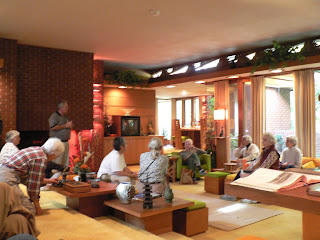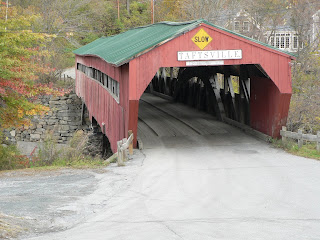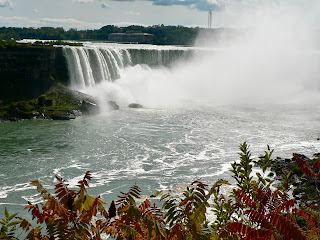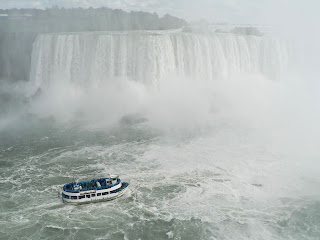The fox photo works. It does nothing, however, to deter the busy scampering grey squirrel who has been busy all fall filling his fat little cheeks with acorns that have fallen from the bur oaks towering over our garden. That's our back garden.
Our front garden is kept for crazy critters. A juvenile male Cardinal spends much of each day launching himself from a beautiful twiggy red and gold tree, beak first, full into the face of our dining room window. Click! Click! Click! Click! he goes, compulsively. We initially feared he was going to go bird-brained he was hitting it so hard.
We closed the curtain, to no avail. We stalked him each time we heard a click, but always he returned. Finally, we resorted to Google to discover what was driving our cardinal crazy, attacking the window. And according to Audobon, it is, as we thought: his reflection. He sees the tree and a strange bird reflected in the glass and he is driven to fight off the territorial invader. Like a right of passage before he begins nesting. Sometimes we even see his brightly plumed red cardinal father perched beside him, wings flapping, breast pouting, proudly urging his son on to bigger and better battles. Poor little bird. We should really be kind and cover his reflection so it doesn't drive him completely nuts, but we are so drawn to him now, we'd miss him if he didn't come by to click.
Then, there is the northern flicker woodpecker. Oooh-laah! What a strange compulsion this guy has! The house is covered with aluminium siding. Impenetrable. But the mitred corners that hold the siding flush appear to be a painted softwood to him. He is able to peck perfect round holes in it. For a home, we figure. Before winter sets in as it is getting cold outside, and he knows it. Pete caulked the first hole, and he started again. We hung mobiles of silver alfoil swinging from the tree branches, attempting to distract him. No luck. With one eye on us down below and his beak busy rat-a-tat-tatting he pecked out another hole. More caulk. Another hole. More and more. When the corners of the house started to resemble Swiss Cheese we resorted, again, to Google. And learned to paste silhouettes of predatory black hawks flying around the mitred corners. Amusing the neighbours who had never seen such eccentric behavior before. Frightening our poor little fanatic away.
 |
| Storking up acorns for the winter |




















































